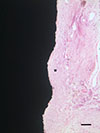Abstract
Purpose
Methods
Results
Figures and Tables
Figure 1

Figure 2

Figure 3

Figure 4

Figure 5

Figure 6

Figure 7

Figure 8

Journal List > J Periodontal Implant Sci > v.45(3) > 1082457








Hyo-Jung Lee 
https://orcid.org/http://orcid.org/0000-0002-0439-7389
Jaden Lee 
https://orcid.org/http://orcid.org/0000-0001-6937-9416
Jung-Tae Lee 
https://orcid.org/http://orcid.org/0000-0001-5383-3004
Ji-Soo Hong 
https://orcid.org/http://orcid.org/0000-0001-5698-0894
Bum-Soon Lim 
https://orcid.org/http://orcid.org/0000-0003-3112-0227
Hee-Jung Park 
https://orcid.org/http://orcid.org/0000-0002-6789-9247
Young-Kwang Kim 
https://orcid.org/http://orcid.org/0000-0002-1984-206X
Tae-Il Kim 
https://orcid.org/http://orcid.org/0000-0003-4087-8021